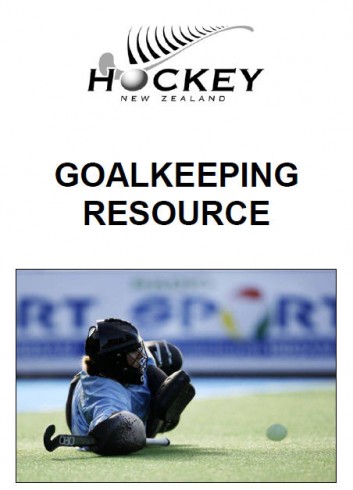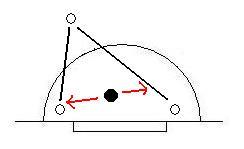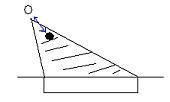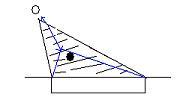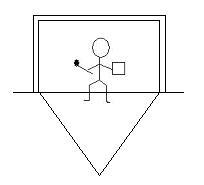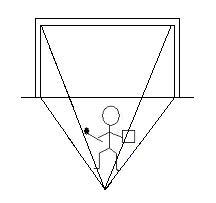Now that you have conquered the basics of being the responsible iron man of your team, the real hard work begins. The hard slog to perfection is more difficult and apparent than it seems; remember that you’re not the only one out there who wants to make the team. Where there’s a will, there’s a way, but you have go out there and practise regularly to prove that you’re the best there is.
There’s no point turning up to a trial thinking that you can just get breeze through it. At the end of the day, when your parents have stopped watching your games, and you have unfamiliar teams and coaches, the only person you can rely on to push yourself is you. Make the most of your opportunities, and do the best you can, otherwise you’ll regret it later. There are a number of older people that you may meet in your sporting career, or workplace who’ll say “I could’ve, should’ve, would’ve but didn’t … get where I wanted to”.
If it’s your dream to make it big, and you want it that badly, don’t let that person be you: you should be prepared to do whatever it takes to get there, and have a smile on your face whilst you’re at it.
How to reach your pinnacle
In order to reach your best, (in fact most goalkeepers in whatever sport don’t reach their best years until they are in their 30s), you will have to work harder than you think is ever possible. Devoting your life to achieving your dreams is just that: you have to sacrifice every waking hour to the sport you wish to play. There are a number of areas that you will need to work on, other than the specifics of save making, to ensure that you can get to the level you deserve.
Constant training
The only way you’re going to stay at a high level is to practise, practise, and practise, and then practise some more. Training continuously week in week out, day in and day out may be extremely draining emotionally and physically, let alone the time management it involves with having to juggle school work or a job to support yourself. However, where there’s a will, there’s a way, and if your ambition is to get to the top one day, or to stay there if you’re already pushing yourself to the highest level of competitivesness, it makes it easier to progress at a quicker rate over a shorter period of time (rather than trying to play at your best by only training once a week). Top internationals train something like 22 hours a week in their efforts to play thier best at the Olympics! Now that’s commitment!!
Improving your skill base
Now that you have a basic understanding of save types and game use, you need to be adding to your ‘bank of saves’. The more techniques you have under your belt, the greater the ability and chance you have of stopping different shots, the more capable you are to deal with specific situations, knowing how and when to make the save. The better chance you have of stopping the shot when you are forced to think on your feet, the better you will play, whilst easy-to-read game plays will give you the chance to dominate the game.
Improving your decision making
By watching other games, other keepers, whether in local or club games, online on field hockey websites (like videos on YouTube – do a search for field hockey, or more specific like the Olympics, or watch highlights on www.ehlhockey.tv ), or videoing yourself and watching it back, you can learn how to judge and read the game. Making the right decision will make you the best goalkeeper around: correct save selection, how you react to set plays, and whether or not you play aggressively. Obviously you cannot define how the game will go, but making the right decisions will get you the win. Reading the game will give you an edge, whilst making the right decisions will result in less mistakes, and therefore less goals.
Improving recovery
Recovery is important to your game, since having made the save you will need to recover in time for the next shot, and poor recovery or slow reactions will result in an easy goal for the opposition. By practising a number of drills specific to situations where quick recovery is essential and will separate the good from the bad; poor recovery will leave open net opportunities for the opposing forwards to get easy goals. It is necessary to improve your recoveries to keep you in the game, and up to the fast level of game play. Maintaining an appropriate level of fitness and working on specific body muscle groups to strengthen specific joints and movement, will help and benefit your recovery times.
More advice
Whilst this book may, and hopefully will, guide you through your progression as a developing goalkeeper in field hockey (yes, no matter how good we think we are, we should always be trying to push ourselves to the next level), there is still a lot more to learn about. Even though it can be a challenge to find specific and useful nuggets of information out there on the topic, if you look hard enough, you should be rewarded for your search.
Other books
Although few and far between, there are a few books out there with potential reading material to learn from, concerning how to keep your goal, there are a few gems of knowledge in existence; if you can find them that is. You can find some scraps of information on goalkeeping in old hockey books, with much better guides on stretching and body work found in ice hockey goaltending books. Keep your mind open to new ideas on diving saves and the like, or improving your mental game and rebound control you could read some soccer and ice hockey books.
Other resources
- Aside from filming yourself and watching back to back games to see how badly you played, there are some videos on you tube featuring saving skills, as well as websites on the subject, which discuss technique, like the Field Hockey Forum – http://www.fieldhockeyforum.com/index.php?PHPSESSID=869e526b0e1b93838277a97381c8917f&board=20.0.
- There is a very useful pdf file produced by obo staff, on this site, which provides technical advice, by an esteemed and experienced ex-American international, John O’Haire; there are two versions: http://blog.obo.co.nz/2009/02/18/goalkeeping-in-field-hockey/ and http://blog.obo.co.nz/2009/02/18/goalkeeping-in-field-hockey-2nd-edition/ . However you will need the experience and knowledge to make use of the information available; this is why the book is such a useful starting point, providing you with the basics and pushing you in the direction of advanced play.
- The guide produced by New Zealand hockey (http://blog.obo.co.nz/2009/06/29/nz-hockey-goalkeeping-resource/) is also great for the beginner; breaking down technique and skills into easy to learn chunks.
Watching live games
Another easy and great idea is to actually go and watch live games; even if it means watching a game played by one of your club’s teams. By watching the goalkeepers play, you can analyse and pick apart their game, working out their strengths and weaknesses, helping you to simplify yours; by realising their mistakes, you can reduce the number you make. After all, playing the game at the highest level always comes down to making the right decision in the right situation, so cutting down your options and selecting the most efficient will make you a better goalkeeper.
